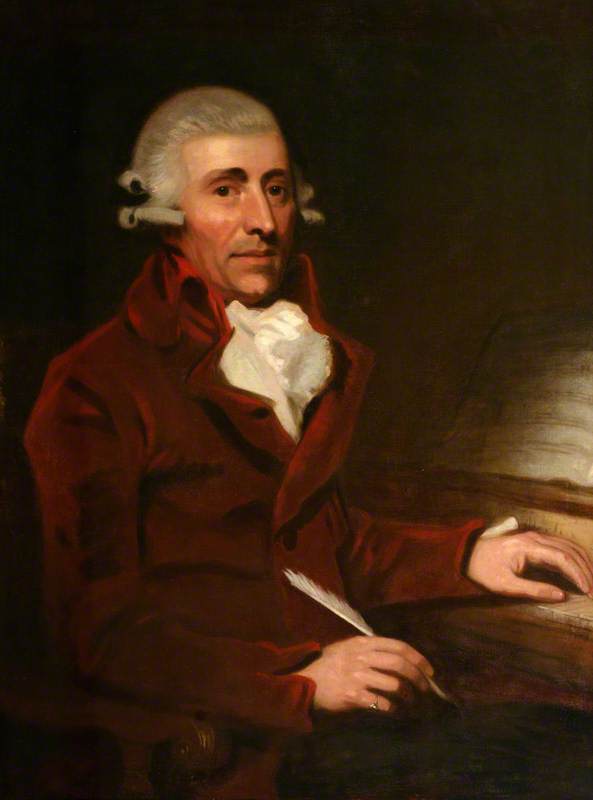
Joseph Haydn’s trumpet concerto distinguishes itself not only as one of Haydn’s most beloved works (in a lengthy catalog full of beloved works) but as the most popular concerto of its kind. The Baroque era left us with dozens of ebullient and regal trumpet concerti (Telemann, Vivaldi, Torelli) and the modern era — leaving alone the staggeringly inventive work of jazz artists like Miles Davis and Dizzy Gillespie — has given us strong contributions in the genre from Bloch, Arutiunian, Takemitsu, and Zimmerman, among many others. However, Haydn’s concerto of 1796 still stands out for most listeners as the representative work of the instrument’s character and nature. Despite the Baroque era’s reputation as the Golden Age of trumpet concertos, Haydn’s work continues to stand apart and above.
What keeps this work, which the Chicago Symphony Orchestra will perform Oct. 17 and 20, fixed in the repertoire? How has it held such sway for well more than 200 years?
One might start with the work’s modesty, a character trait not normally associated with the trumpet. Consider the instrument’s “place” during the Baroque era and before. Fanfares, calls to arms, triumphal marches — generally speaking, the trumpet’s personality is characterized by heraldry and proclamation. Flourish and bombast. Battle and honor. You want to seduce someone? Grab a violin or guitar. You want to announce the presence of royalty or call a regiment together? Trumpet. It’s the difference between a dove and a peacock.

Joseph Haydn wrote his Trumpet Concerto for his friend, the virtuoso Anton Weidinger, who gave the work its premiere performance in 1800.
Take for example the instrument’s virtuosic concertino passages in Bach’s second Brandenburg concerto. Typical of the instrument’s use during that time (if anything about Bach could be called typical), it’s bright, lively, noble, elevated; the kind of music that would make a regal court feel very good about itself.
Compare that to the understated yet more expansive opening of Haydn’s concerto. Putting aside the numerous distinctions between Baroque and Classical style, the trumpet has been located in a more approachable and humane register. It’s in the warmer, lower range instead of being immediately thrown into the stratospheric heights. The melody is simple, straightforward, refined. A few gradual steps upward toward a modest peak. Ideal for future development. Suddenly the technical wizardry of the earlier era seems ostentatious. From the start, Haydn poses for us a very interesting question: Can the trumpet hold our attention without its characteristic imperious and brash nature?
Quite obviously, yes. The concerto allows for virtuosic work, it provides the trumpet with plenty of opportunities to display its strengths, but it also opens up a new dimension of expressive power, a richness and good humor that shares more in common with the Mozart horn concertos than the Baroque trumpet whirlwinds that preceded it.
We can attribute some of this startling shift to the evolution of the instrument itself. Well into the 1770s, trumpets were valveless “natural” trumpets, incapable of a complete diatonic scale in the low or middle register or a complete chromatic scale in any register. Simply put, there was greater notational variation in the top notes and Baroque composers naturally exploited that range.
As the demands of the Classical style began to render these instruments obsolete, manufacturers sought ways to improve the trumpet, beginning with sound-holes (as with woodwinds), through a misbegotten detour with tuning slides, and eventually leading to the valved instruments we know today.
One of the first to use the new instruments was Haydn’s good friend Anton Weidinger, who demonstrated its capabilities at a concert in Vienna in 1800. The centerpiece of the concert was Haydn’s concerto (Haydn’s final orchestral work), written specifically for Weidinger and for the event.
As author James Keller points out, the concerto was a turning point in music history: “Only at its third entrance does the new trumpet really show its colors, with a theme that strolls through an entire major scale and beyond, softly and in a relatively low register, before injecting a little descent of six notes. The effect must have been extraordinary: such a combination of pitches, dynamics and timbre could not have been heard ever before in history. …With this concerto the trumpet enters the modern world.”
In short, the trumpet was now capable of complex and expressive melody in ways it was not before. The palette had been expanded, opening the door to the wildly inventive works to come. Keller’s assessment holds true for this listener. Listen to a few Baroque concertos, and then listen to Haydn’s. As enthralling and as brilliant as the Baroque works are, they come from a decidedly different time and place. Somehow, Haydn’s composition remains fresh, undated, timeless.
Peter Lefevre writes about classical music for the Orange County Register and Opera News.
TOP: Detail of a keyed trumpet, a modern replica of the instrument used for the premiere of Haydn’s concerto in 1800. | Photo: Wikipedia